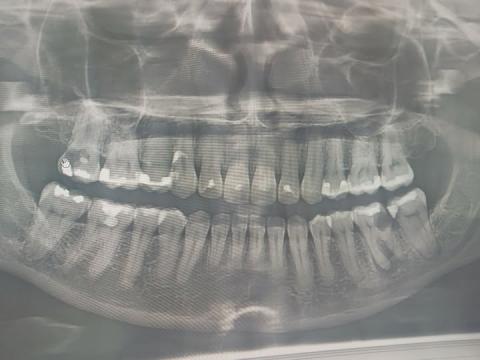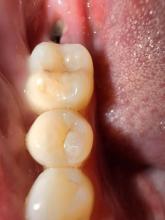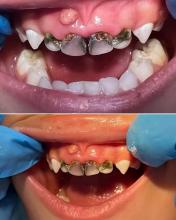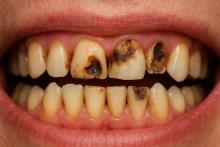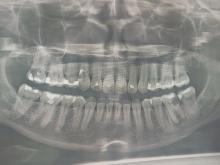Transforming Smiles, Restoring Confidence.
See how root canal treatment can save infected teeth #2 & #18. Learn recovery timelines, dentist advice, and find a nearby clinic using our Cebu Dental Map
Severity:
Teeth Problems:
Advanced Dental X-Ray Analysis & Root Canal Evaluation
Radiographic Observations (Zoom 100%)
Upon close examination of your panoramic X-ray, several key findings are noted:
-
Tooth #2 (Upper Right Second Molar)
-
Shows early signs of infection or periapical radiolucency (dark area near the root tip).
-
This indicates pulpal inflammation or developing abscess.
-
A root canal treatment (RCT) may still save the tooth if performed soon.
-
-
Tooth #18 (Lower Left Second Molar)
-
Displays incipient infection at the root apex.
-
The dark zone suggests bacterial involvement inside the pulp chamber.
-
Root canal therapy is still possible if the infection hasn’t extended beyond the bone.
-
-
Tooth #19 (Lower Left First Molar)
-
Shows more advanced infection or bone loss, consistent with dentist evaluation #2.
-
The infection seems deep, possibly involving the furcation (area between the roots).
-
Extraction is strongly recommended to prevent spread to adjacent teeth and jawbone.
-
-
Other Teeth and Supporting Structures
-
Mild generalized bone resorption along the posterior areas (a sign of early periodontal involvement).
-
Existing dental restorations (fillings) are visible, some with possible leakage or decay under them.
-
Wisdom teeth appear impacted or partially erupted, which may cause future crowding or gum irritation.
-
Combined Dentist Evaluation Summary
-
Dentist Evaluation 1:
“Yes, teeth #2 and #18 show starting infection. Root canal treatment can still save them. Act soon.” -
Dentist Evaluation 2:
“Teeth #2 and #18 need urgent evaluation. Tooth #19 requires extraction ASAP due to extensive infection.”
Estimated Healing and Recovery Period
-
Root Canal Therapy (Teeth #2 and #18):
-
1–3 dental visits, total recovery about 2–3 weeks after completion.
-
Minor post-procedure sensitivity may last a few days.
-
-
Extraction (Tooth #19):
-
Gum and socket healing in 2–4 weeks, full bone healing in 2–3 months.
-
Implant or bridge placement may follow once healed.
-
If No Action Is Taken Within 30 Days
Without proper treatment:
-
Infection from teeth #2, #18, and #19 may spread to surrounding bone (osteomyelitis).
-
Possible formation of dental abscess, causing facial swelling or severe pain.
-
Adjacent teeth may loosen or shift due to bone destruction.
-
Chronic sinus infection risk (from tooth #2’s upper jaw area).
-
Long-term: bone loss, gum recession, and need for multiple extractions.
Professional Recommendation
-
Immediate extraction of tooth #19 to remove the infection source.
-
Schedule root canal treatments for teeth #2 and #18 within 7–10 days.
-
Take dental X-rays every 6 months for monitoring.
-
Antibiotic coverage may be prescribed by your dentist before or after the procedure.
-
After healing, consider dental implants or bridges to replace missing teeth and preserve bite balance.
Dentist’s Comments
“You still have a good chance to save teeth #2 and #18 if root canal treatment is done immediately. Delaying could lead to infection spread, making them non-restorable. Tooth #19 needs extraction to prevent further bone and nerve involvement.”
Visit Your Nearest Dentist
For proper evaluation, visit your nearest dental clinic as soon as possible. Our locator will help you find trusted professionals near your area:
Find a Dental Clinic Near You – Cebu Dental Implants Map
Early root canal and extraction treatment can prevent long-term complications, maintain your jawbone integrity, and save your natural teeth.
Prompt action within 30 days ensures faster recovery and pain-free oral health.
Frequently Asked Questions (FAQ) About Root Canal & Tooth Extraction Recovery
1. Can a root canal stop a tooth infection?
Yes — a root canal is the most effective way to stop a tooth infection and save your natural tooth.
In your X-ray, teeth #2 and #18 show early infection near the root tips (periapical radiolucency). A root canal removes the infected pulp tissue, disinfects the root canals, and seals the tooth to prevent bacteria from spreading further.
If treated soon, both teeth can fully recover and function normally for many years. Delaying treatment could allow the infection to reach the jawbone, making extraction the only option.
2. How long does it take for gums to heal after extraction?
Healing time depends on the severity of the infection and overall health, but on average:
-
Initial healing: 1–2 weeks (soft tissue closes).
-
Complete bone healing: 6–8 weeks.
In your case, tooth #19 shows extensive infection and may need extraction soon. After the procedure, proper oral care, antibiotics, and follow-up checkups will help your gums heal faster and prevent reinfection of nearby teeth.
Tip: Avoid smoking, maintain good oral hygiene, and follow your dentist’s aftercare instructions for quicker healing.
3. Where to find a dentist in Cebu for root canal treatment?
You can easily locate trusted dental clinics and endodontists (root canal specialists) in your area using our interactive map. This tool helps you find licensed dentists who specialize in root canal therapy, tooth extractions, and implant placement.
Visit: Find a Dental Clinic Near You – Cebu Dental Implants Map
With early treatment, you can stop the infection, restore your bite, and protect your overall oral health.
Your X-ray shows that teeth #2 and #18 are still restorable with root canal therapy, while tooth #19 requires extraction to stop infection spread.
Early dental intervention ensures faster recovery and preserves bone integrity — so it’s best to act within 7–10 days.

